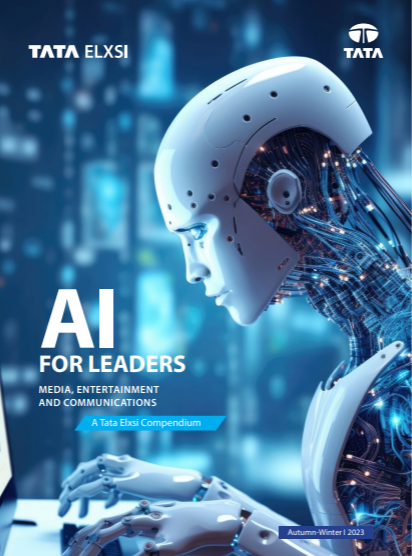Choosing the right supplier who has adequate domain expertise for your AI proof of concepts or projects requires a structured approach. Much like preparing a gourmet recipe – each step is vital for that perfect dish of success.
Here’s a step-by-step guide to execute your AI pilot project:
Data Strategy
Data Acquisition
A meticulous approach should be taken in gathering raw data that adheres rigorously to industry standards and specific project requirements. Your strategic partner should be able to identify the right data source, toolchain requirements, data module, and server requirements. Post that, the right network bandwidth would be required to correctly analyse data. This phase lays the foundation for the subsequent AI project by assembling a comprehensive and high-quality dataset.
Data Exploration
During this stage, the primary goal is to gain a comprehensive understanding of the data while evaluating its quality and cleanliness. With the right statistical analysis and visualisation techniques, the strategic partner should be able to unearth valuable insights and discern patterns thus enabling you with data-driven decision-making.
Data Pre-Processing
Data quality is paramount. Through rigorous data pre-processing procedures (Data Cleaning, Data Integration, Data Packaging, Data Sampling), the strategic partner should ensure that the data is pristine, accurate, and primed for advanced analysis and modeling, enhancing the reliability of the AI-driven solutions for the next stage.
Watch out for
Insufficient Data Quality and Quantity: AI models require high-quality, relevant data for training and validation. If the data used is incomplete, outdated, or biased, it can lead to inaccurate predictions and hinder the success of the AI deployment. Data Source and Data Collection mechanism must be planned in advance keeping the project timelines in mind.
Data Drift: Data drift is the alteration of data distribution over time, affecting AI model accuracy. It happens when incoming data differs from training data, necessitating continuous monitoring and retraining to maintain AI system effectiveness.
AI Strategy
Understanding Quantitative Objectives
In the initial phase, the emphasis lies on developing a profound comprehension of the distinct objectives within your company. This deep understanding ensures seamless alignment between AI solutions with the overarching business goals and creative vision. It’s imperative to define the acceptable range for precision and accuracy of the AI models from the outset, with the strategic partner evaluating their feasibility.
Watch out for
- Lack of ROI Clarity: AI initiatives often require significant investments. If the expected return on investment (ROI) is unclear or not well-defined, it can be challenging to secure funding or implement the project at scale A clear understanding of the expected ROI is to be agreed upon between the strategic partner and customer before starting the project.
- Scope Creep: Expanding the scope of the AI project beyond the initial objectives can lead to increased costs, longer timelines, and a higher risk of failure. It’s essential to maintain a clear focus on the original goals.
Model Building, Testing and Validation, Selection
AI experts meticulously construct model frameworks using advanced statistical procedures (Classification, Clustering, Regression, Association Analysis). Model training is carried out for these frameworks using training data sets. Error analysis and model validation ensure AI model fine-tuning and the right model selection from various candidate models for desired performance and accuracy.
Watch out for
- Lack of Scalability and Integration: AI solutions must integrate seamlessly with existing systems and processes. If an AI model or system cannot integrate and scale effectively with the broader business environment, it may not be suitable for production.
- Model Drift: Model drift occurs when a previously well-performing AI model starts making less accurate predictions due to changes in data patterns or external factors. Addressing model drift involves constant monitoring, retraining, and adapting the model with new data, maintaining its relevance and performance in evolving environments.
Production Deployment
The selected model is deployed on the production environment. Continuous monitoring of the model’s functioning with the live data sets is required to ensure that it meets the defined objectives, use cases, and accuracy.
Watch out for
- Inadequate Change Management: Implementing AI often requires changes in workflows and processes. If there’s insufficient change management in place to guide employees through these transitions, resistance and project failure can occur. There must be a gradual transition plan in place from existing to new methods of operation, ensuring that employees are adequately trained and supported throughout the process.
- Lack of Continuous: Monitoring and Optimisation: AI systems require ongoing monitoring and optimisation to maintain their performance. Failure to establish mechanisms for continuous improvement can result in the degradation of results over time. Therefore, implementing the right MLOps system is essential. This helps not only to maintain but also enhance AI system performance, ultimately helping to reduce the Total Cost of Ownership (TCO).




